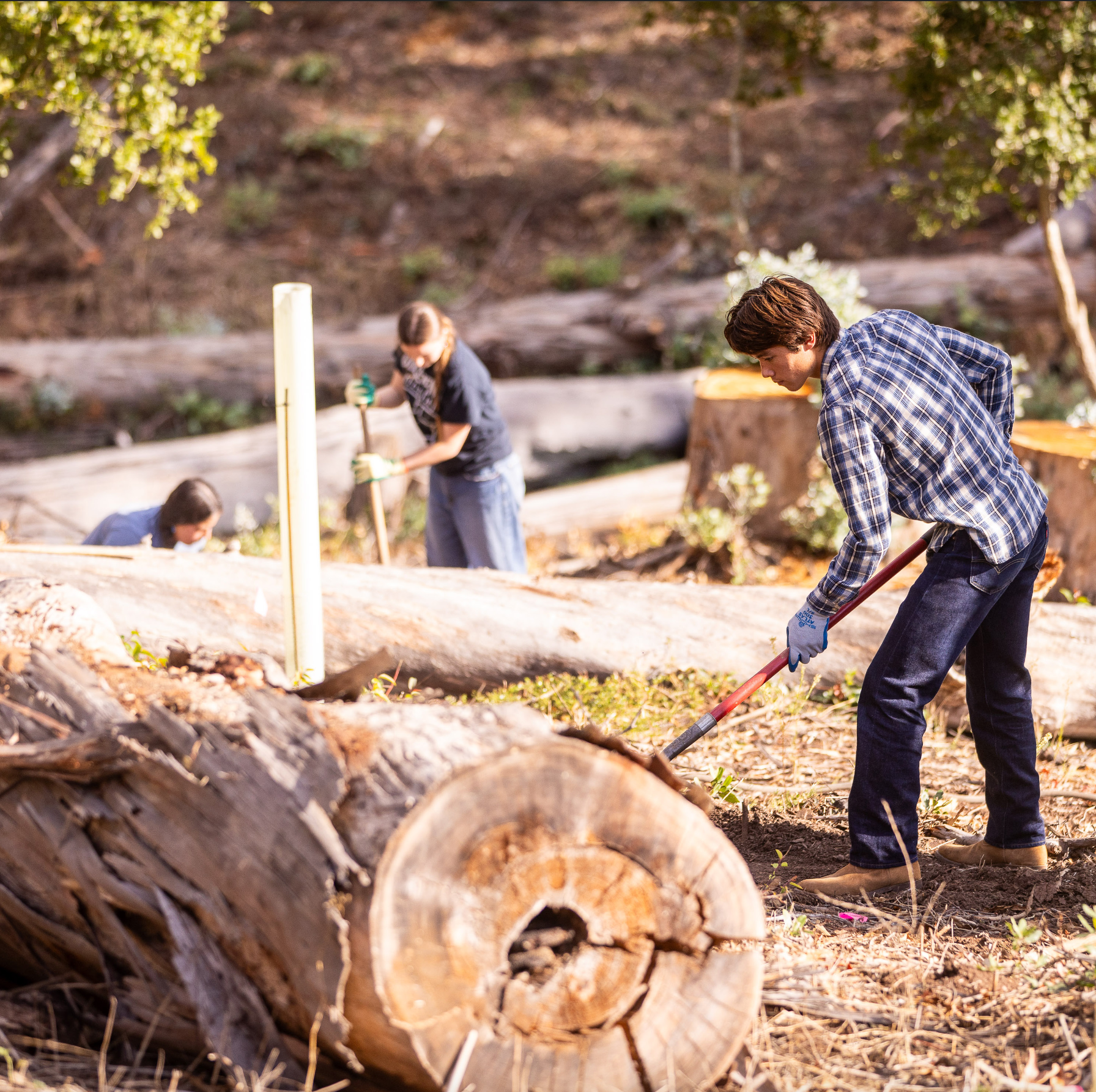Magazine Spring 2024 Planting Promotes Fire Resilience and Biodiversity
“Good luck, little tree. You’re my tree, and I’m rooting for you,”
a student volunteer said after planting one of 60 native coast live oaks as part of a restoration project near the Westmont campus.
In summer 2023, the Montecito Fire Protection District removed many dead and dying eucalyptus trees along the dry Westmont Creek between the Las Barrancas faculty homes and Carr Field, providing an opportunity to improve the ecosystem while increasing wildfire resilience in the interface between wildland and urban areas.
Project managers Janell Balmaceda, sustainability coordinator and garden manager, and Laura Drake Schultheis ’06, assistant professor of biology, received a grant from the Regional Wildfire Mitigation Program (RWMP) Landscape Domain with work so far amounting to about $32,000.
Spatial Informatics Group-Natural Assets Laboratory (SIG-NAL) is developing the project, managing the work and facilitating projects that will coincide with the new oaks reaching maturity and the removal of additional invasive eucalyptus trees.
“We’ll install a beautiful palette of California plants in later phases of the project,” Balmaceda says. “We hope the ecological restoration project offers numerous benefits to the Las Barrancas and Westmont communities through fire mitigation, an increase of biodiversity, research opportunities for undergraduate students, conservation, and a great example of Christians engaged in caring for God’s creation.”
Schultheis says the interactive learning opportunities connect students to the project by allowing them to get dirty planting trees and improving the environment around campus. “It’s so important to get them out of the classroom and get their hands in the soil,” she says. “It means they’re helping to improve their home and connecting to nature. The ecological lessons come alive for them when we’re working in the dirt together.”
Montecito Fire, Santa Barbara County, neighbors and college staff all support the project. Many witnessed the 2008 Tea Fire, which spread quickly through the eucalyptus-lined creek bed. “I think it brings healing for them,” Schultheis says. “Everyone who has walked by has been very grateful for this project, which in turn brings a sense of happiness and joy to us as well.”
In the Tea Fire, the eucalyptus canopies burned up like kindling, exploding and throwing embers to move along the creek corridor and enter the Las Barrancas community, destroying 14 homes. “Whereas native oak trees have higher fuel moisture and tend to sequester fire,” Schultheis says. “In fact, firefighters report seeing embers stopping in oak canopies as opposed to blowing farther along.”
Westmont has worked with several others on the project, including Watershed Progressive, a consulting and implementation collaborative, and Dave Muffly, a senior arborist and horticulturist with Oaktopia.
“Anytime you can plant one of the oaks, it represents another potential stop to the spreading fire,” Schultheis says. “Additionally, adult oak trees will start dropping acorns, and we can get more oaks sprouting up and filling in the gaps. It helps create microhabitats, shady areas where more biodiversity can come in and inhabit the area and start returning it toward a native oak woodland.
“When you bring in plant communities, the insects come, the pollinators come, the herbivores come, and the study of ecology enables us to explore these connections.”
